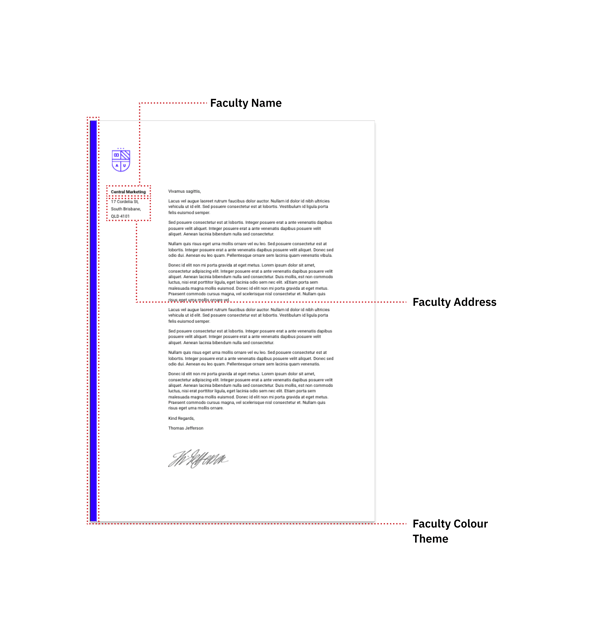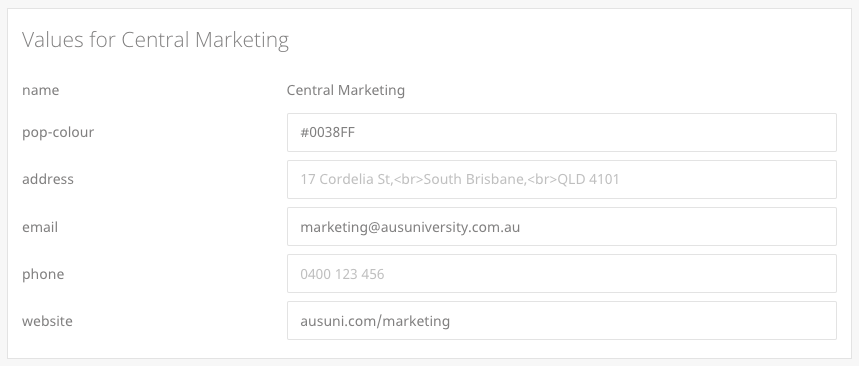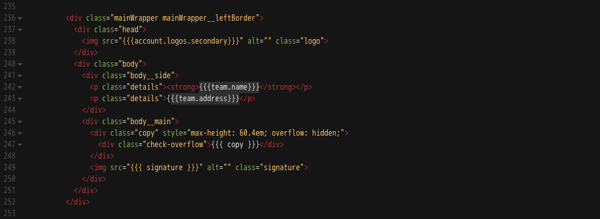One of the most challenging parts in managing a widely distributed network of stakeholders, be it an international organisation, a franchise network or even a multi-site education corporation, is establishing a central source of truth for generic, localised information.
As marketers, we have an endless list of places [both online and offline] where stakeholders desire to be found so that they may have the most impact in their local market. If you're lucky you'll have some kind of matrix that serves as your central repository in the event of details being updated, a restructure or even an area of the business becoming redundant.
What kind of information is classed as metadata?
Metadata can mean many things to many people in different contexts. For our Outfit-specific scenario, metadata refers to the information that is consistent, generic and that identifies a specific team, office or location in your organisation. I'll explain visually for all you kinaesthetic types:

To start simply, metadata often describes generic contact information, perhaps trading hours and the name of your team - but it certainly doesn't stop there. It's once we start thinking about metadata as a more open concept, we start to see the power of metadata.
I'll amend my previous definition to reinforce my point: metadata refers to ANY information that is consistent, generic and that identifies a team.
How does Outfit handle metadata?
Now we know that Outfit can handle anything from colour theming, to text and imagery and even design configuration rules as metadata that can be tied to teams of users and pulled into our templates - but how does it all work?
In every Outfit account, we can create custom metadata fields. These fields become a sort of checklist for every team in your network, and we can absorb data that inform these fields from just about anywhere. What you end up with in your Teams page in Outfit is a form that is customised to your organisation's requirements:

How does metadata work with my templates?
So we know that Outfit templates have inputs. These are what we use to manually make changes to our documents. What you may not know is that within the code of our HTML restraints-based templates, we can insert references to our team metadata (highlighted in grey):

What this means is that the template will know to look for metadata fields like Team Name or Team Address whenever we use it to create a document. The power of this is that we never again have to worry about a stakeholder:
a) not knowing when their generic team metadata is required
b) not knowing what their generic team information is (you laugh, but it happens)
c) not knowing how to format their metadata OR
d) missing a digit in a phone number or misspelling their street address
In short, these fields automate the stuff that is always required and frequently subject to human error and instead allow the user to focus on the information that requires their expertise.
A bonus is that Outfit's Users & Teams page naturally becomes a central source of truth in your business where, when crucial information changes, every piece of information is immediately and seamlessly updated.
On a large scale, the impact this has is that 1 template, using multiple metadata fields, can produce a multitude of unique, localised documents with a significantly reduced margin for error.
Neat, huh?